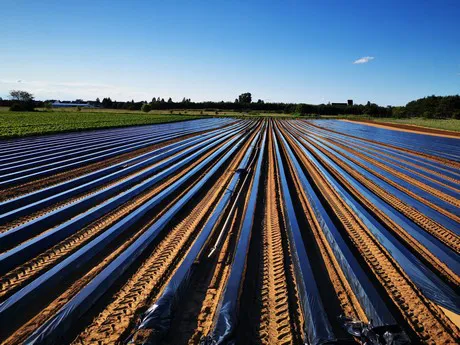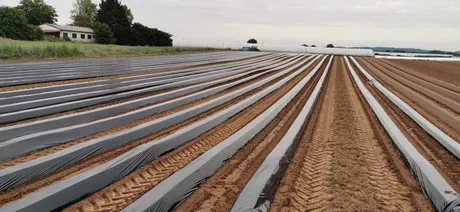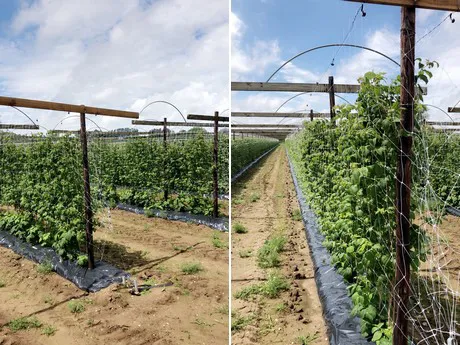When the strawberry season is over, the next strawberry season is about to start, so the fruit producers will soon have to start growing again next year. In order to optimize cultivation conditions, Heinrich GLAESER has a mulch film for (among other things) the cultivation of strawberries in its assortment. Stephan Kohn, Division Manager at GLAESERgrow, explains: "The foil is used to suppress weeds, significantly reducing the use of herbicides and optimizing plant growth: heat and moisture can be stored in the soil better, increasing the yields."

Kohn continues: "Our foils are available in different versions, as mono or coex foil, as well as in different colors black, white/black or silver/black.The pure black foil can be used to shorten the harvest, while the white/black foil delays the harvest whilst still providing the best protection against weeds and having a positive effect on the color of the fruits." For the cultivation of strawberries, he usually recommends a thickness of 40μm for one-year or 50μm for two-year crops. "The most important aspect here, however, is the high UV stability of the foils"
It is also possible to have the films already perforated or micro-perforated: "Every producer has different demands. The foil can then be punched by hand or by machine, and the seedlings can then be planted."

Biofoil
For many producers, biodegradable foils also have an advantage - both for cultivation and disposal. GLAESERgrow also has a solution for this, says Kohn: "The demand for biofoils is constantly increasing and we are naturally striving to meet this demand." The foil is 100% compostable, so it can simply be incorporated into the soil after use. It is ecologically certified and has the same weed-suppressing effect as the regular mulch foil." For this variant, perforation or micro-perforation is possible as well. The foil is water-soluble and safe for animals and plants, explains the expert. "The foil can last up to 20 months, depending on the customer's requirements, but its compostable. This means that its durability is highly dependent on environmental factors, so we currently only recommend biofoil for one-year crops - and are working to extend usability."
Next news from GLAESER
GLAESERgrow offers two more new products for cultivation this year. "On the one hand, we are working on vertical growth options for, for example, raspberries, but also for vegetables such as tomatoes and cucumbers, making them more uniform." The frames provide plant stability, increasing the quality. "And we are especially pleased to welcome our customers to make our new substrate foil available."

GLAESERgrow is part of the GLAESER Group, headquartered in Ulm, a traditional family business that since 1888 has been involved in the recycling, production, trading of textiles and plastics of all kinds and has continued to evolve ever since. The company now employs more than 800 people in its various divisions.
For more information:
Stephan Kohn
Heinrich GLAESER Nachf. GmbH
Blaubeurer Str. 263
89081 Ulm
Deutschland
Tel: +49 (0)731 3981-62
E-Mail: grow@glaeser-textil-ulm.de
Web: www.glaeser-textil-ulm.de
